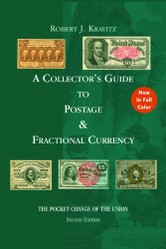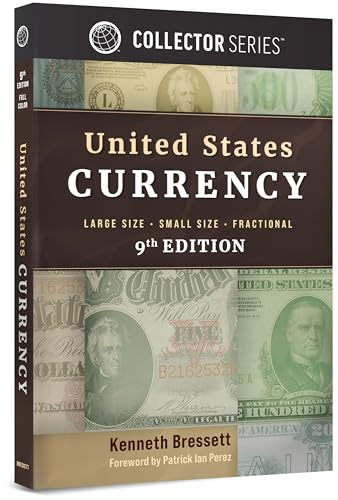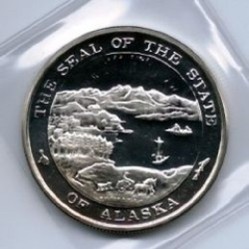The United States has had some coin and currency issues that just did not last. Some, like the large cent, simply yielded to a more appropriate replacement, but others are less known, and often not seen. Owning one of these unusual pieces can make your collection more interesting. But, first you need to know they exist,.

Unusual Coins and Currency of the United States
The United States has had many different and unusual coins and paper currency. The fractional currency is perhaps the mot unusual. Are you familiar with these?
Older Gold Coins
There were gold coins, the last of which were minted in 1933. Then, not only did the government stop minting gold, it required gold coins to be brought in and exchanged. Owning gold, other than jewelry or other useful items, was illegal.
Not everyone complied. Many people hoarded their gold. Now, the law has again changed, and the old coins have surfaced, but how many? While mintage figures were kept, no one knows how many of any particular coin was turned in for melting.
The old gold coins also had some unusual denominations. They came with denominations of $1, $2.50, $3, $4, $5, $10, and $20. There are quite a few people who have never heard of the $2.50, $3, and $4 coin denominations for United States coins.
Then, some of the later gold pieces, the Indian Head coins, were made using the incused design, where the image is recessed into the coin. This turned out to be a bad idea, since handling a coin can wear away the raised lines of a recessed image faster, so the images wore down quickly.
Obsolete Coins
The lowest denomination, the half cent, has not been minted for a long time. At one time a half of a cent meant something, so change had to be made for a penny.
There was a half dime worth five cents, and while it is no longer being produced it has at least been replaced by the nickel. The half dime looked like a baby dime, and was made of silver, just like the dime.
A two cent piece was minted for a time, but soon became obsolete.
There were two different three cent pieces, the nickel and the silver coins. The silver three cent piece is the smallest coin by weight, and just slightly larger in diameter than the gold dollar, of all of the coins that the United States ever had circulating. It was minted along with the nickel three cent piece concurrently for several years, which is unusual for circulating coins.
The twenty cent piece was only minted in four years, and coins from only two years were circulated. This coin looked like a quarter, and was very close to a quarter in size. It had to be retired due to public confusion.
Paper Money
There are many older forms of paper money, including some rather large bills by today’s standards for size. But, two series need a special mention.
The Educational Notes
Three notes, those with the denominations of $1, $2, and $5, were released. This series lasted but briefly. They were to educate the public with lessons, which seemed to be a great idea. Unfortunately, the $5 bill showed a breast, and there was an outcry to ban the notes, a movement started in Boston. The notes were discontinued the first year of the controversial $5 having been first released.
Other notes for the series were planned, those that would have had higher denominations, but the entire series was halted after the public outcry.
Fractional Currency
During the Civil War, beginning in 1862, and going into 1876, small denomination paper currency was issued by the United States Government. The need came from a shortage of metal caused by the Civil War. The notes were made on rag paper, so many have dark splotches that come from the rags used not being fully broken down. The paper was less than high quality when these were printed.
Fractional currency was made in three, five, ten, fifteen, twenty-five, and fifty cent denominations. The three cent bill is the lowest denomination of paper money issued by the United States.
There were five issues, some of which overlapped. However, not every denomination was part of every issue. The fifteen cent denomination only occurred for the fourth issue, the three cent denomination occurred only for the third issue, and the five cent denomination occurred only for the first three issues.
These are much smaller than the current dollar bill, and make an interesting collectible. But, paper money as old and poorly made as the fractional notes are rare in mint condition. For these you might consider lesser grades as acceptable.
Use Your Referrence Book
A reference book is a must for any collectibles. Looking through one allows you to know what is available, and to make an informed purchase. It can also be invaluable with providing details, one of which might well be the value of the piece.
Once you have a collection, update your reference books often. Most come out on an annual basis.
This article contains links to affiliate programs from some or all of Zazzle, Viglink, and Ebay through Viglink, and Adsense advertising. These must use cookies to allow for proper crediting.
Images allowed by affiliate programs.
You might also like
Starting a New Coin BlogI have launched a coin blog, and the experience is rewarding me with an incre...
Art Contest with Collectible CoinsThe State of Alaska has an interesting art contest annually. The winning des...







 Christmas on Zazzleon 10/21/2025
Christmas on Zazzleon 10/21/2025
 The Linear Equation and Related Equations and Inequalitieson 08/15/2024
The Linear Equation and Related Equations and Inequalitieson 08/15/2024
 Understanding Calculus: A Simplified Approach to Derivativeson 08/05/2024
Understanding Calculus: A Simplified Approach to Derivativeson 08/05/2024
 Limits: Vital Building Blocks of Calculuson 08/01/2024
Limits: Vital Building Blocks of Calculuson 08/01/2024



Comments
Thank you for the explanations!
Thanks for the comments. To answer the question by Mira, yes, the $1 gold coin was $1 of gold, but at that time gold was fixed at $20 an ounce. Today, it has much more that $1 of gold in it. I believe the 2 and 3 cent pieces, or at least one of them, was for postage purchase. And, yes the $2.50 denomination is strange indeed, but it was minted as 1/8 of an ounce of gold.
I didn't know there was a two-dollar bill in circulation! Also, whatever prompted them to make three-cent bills? :) Besides those bills, what surprises me the most is that there were $2.50 gold coins. I always expected to see round numbers. Also, another question: did the $1 of the lowest-denomination gold coin cover its value in gold??
Cool information here. I can remember seeing a two cent piece years ago - somewhere... wish I could remember where. We still can request $2 bills from the bank here, and sometimes they have them. Not always, though. I never knew about those other odd denomination coins, though.
Imagine getting a three cent bill.
I got a $2 bill the other day as change. It felt sooo weird. I used it as soon as I could, so I wouldn't have to take care with it. I had never seen one before. It's funny how we get so used to certain numerical amounts.